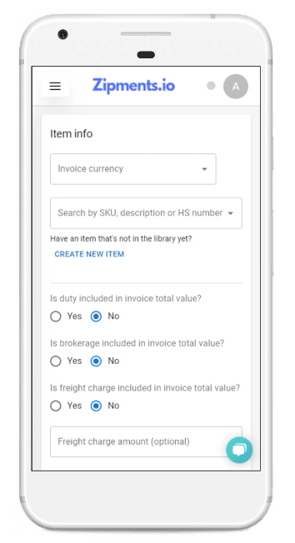Customs clearance fees are a cost of doing business. In the importing world, however, it's not...
How To Save Money On Duties and Taxes
Customs clearance can be a complex and costly process, especially when it comes to paying duties and taxes on imported goods. Any mishaps or incorrect information can lead to unnecessary costs paid for shipments crossing borders. However, armed with strategic planning and a solid understanding of customs regulations; you can effectively minimize your duty and tax costs while streamlining the clearance process. There are a few practical steps and insights which can help any importer save money, and ensure a smooth customs clearance experience.
.png?width=1920&height=1080&name=Red%20Blue%20Neon%20Technology%20Video%20(5).png)
Use Customs Brokers
Customs brokers can be difficult to work with or get a hold of, so not everybody would consider using one in their customs clearance process. However, hiring a customs broker can help you navigate the complexities of customs clearance more efficiently, and ensure compliance with regulations. Customs brokers have expertise in customs procedures, and can help you save time and money by handling the clearance on your behalf.
Each country has its own set of rules and regulations regarding duties and taxes on imported goods. Understanding these regulations will help you anticipate potential costs and requirements during customs clearance. Customs brokers are well versed in regulation and can find ways to save you money, while avoiding any penalties which can set you back.
Monitor Exchange Rates
Fluctuations in exchange rates can impact the cost of importing goods, especially when paying duties and taxes in foreign currencies. Your documentation, especially the customs invoice, needs to include currency conversions, so you should be aware of what it will cost you to import goods. Keep an eye on exchange rates, and consider timing your imports to take advantage of favorable rates and minimize currency conversion costs.
Calculate Duties and Taxes Early
In order to know what it may cost you to import, you can always calculate an estimate of the duties and taxes your shipment will incur. To estimate the duties and taxes you will need to pay, you can use online tools such as Zipments, or consult with a customs broker. Duties are typically calculated based on the value of the goods, the country of origin, and the HS code. Taxes, such as value-added tax (VAT) or goods and services tax (GST), may also apply. Understanding these costs upfront will help you budget effectively for your importation.
.png?width=531&height=531&name=Blue%20Modern%20Stocks%20Investment%20Mobile%20App%20Promotion%20Instagram%20Post%20(2).png)
Are you tired of being caught off guard by unexpected duties and taxes when importing goods into Canada?
Say goodbye to surprises at the border with Zipments Duties and Taxes Calculator. Our user-friendly tool allows you to calculate the exact amount you owe within minutes, giving you peace of mind and financial clarity.
All you need to do is input key details about the item you're importing, such as its value, country of origin, and product category. Our advanced algorithm will then provide you with a precise calculation of the tariff and duties owed, ensuring transparency and accuracy in your import process
Use Free Trade Agreements
The easiest way to save money on your imports is by taking into account the existing benefits you may be entitled to. Take advantage of any free trade agreements that your country has with the exporting country. Free trade agreements work to reduce or eliminate duties on certain goods, helping you save money on your imports.
Some countries also offer duty drawback programs that allow you to recover duties paid on imported goods that are later exported. If you frequently import and re-export goods, you can also consider participating in a duty drawback program to save money on duties.
Research Tariff Rates
Before importing goods, research the tariff rates for the specific items you plan to bring into the destination country. Understanding the applicable duties and taxes can help you estimate the total cost of importing the goods, and plan your budget accordingly. Properly classifying your goods according to the Harmonized System (HS) codes is also crucial for determining the correct duties and taxes.
Make sure to accurately describe the goods and provide all necessary documentation for your shipment, to avoid any delays or additional costs. In today’s age, with technology you can find the correct tariff within seconds, leading to more accuracy on your documentation and less time spent in the process.

With Zipments, accuracy concerns are a thing of the past. Our platform leverages AI technology to ensure that your customs invoices are created with precision, eliminating the need to worry about correct tariff classification.
With our platform, you can effortlessly generate the Bill of Lading and seamlessly share documents or communicate with all parties involved. Zipments facilitates smooth and efficient communication, making the entire process hassle-free.
✔️AI Automatically Detects The Tariff For You
✔️Transmit Invoices Seamlessly
✔️Store Data In Your Personal Library
Whether you need a Canada Customs Invoice or a U.S. Customs Invoice; you can simplify your tariff classification, streamline document creation, and expedite your customs clearance process with Zipments.
Navigating customs clearance duties and taxes is a crucial aspect of importing goods into another country. By understanding the steps you can take to minimize your costs, you can streamline the customs clearance process and avoid potential pitfalls. Knowing which tools to use to prepare your documentation is key in ensuring a successful and cost-effective importation process, so that you can import or export with ease.



.jpg?height=200&name=Blue%20Illustrated%20Dots%20Hosting%20Provider%20Presentation%20(9).jpg)
.png?height=200&name=Red%20Blue%20Neon%20Technology%20Video%20(4).png)
.jpg?height=200&name=Red%20Blue%20Neon%20Technology%20Video%20(5).jpg)